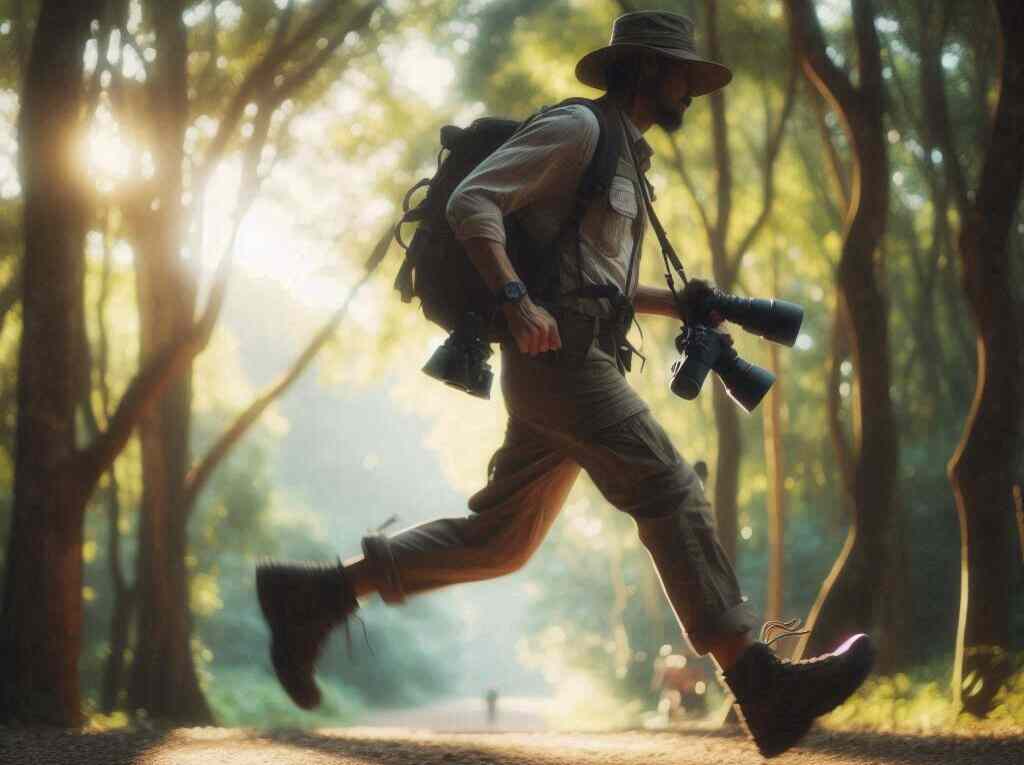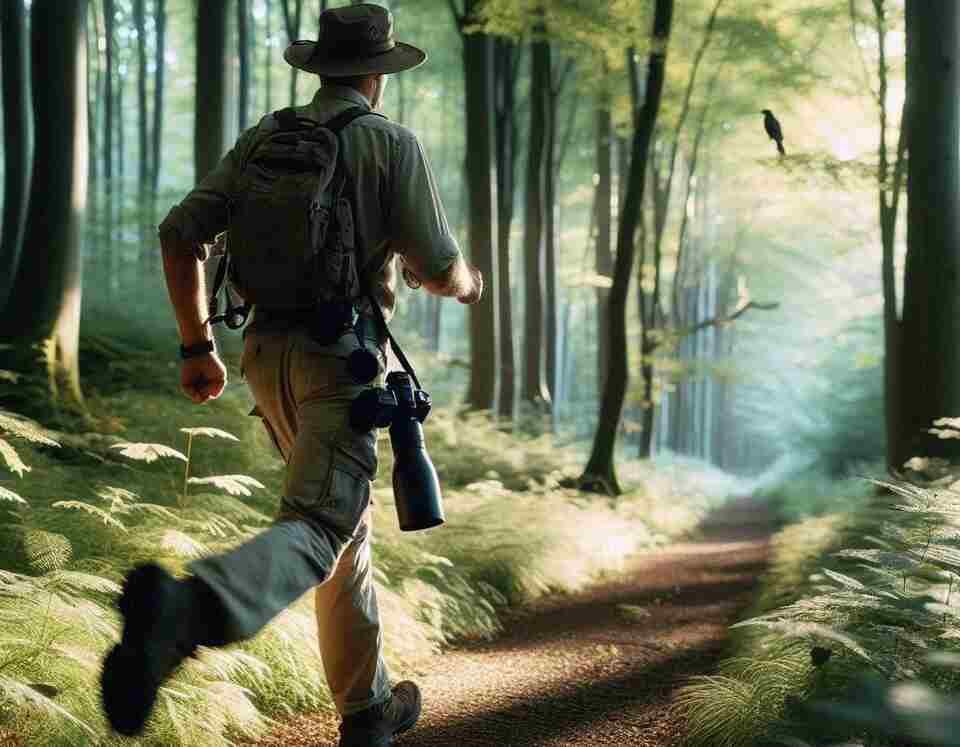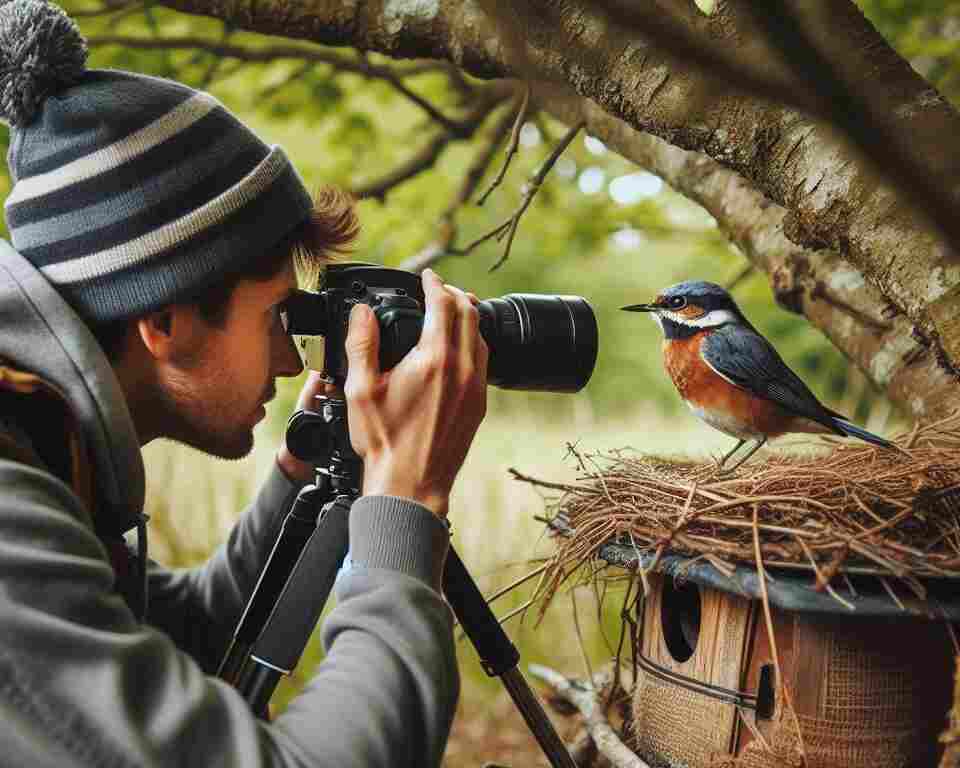Ever wondered, what are the common birdwatching mistakes people make? One mistake is not having the right gear, such as binoculars or a field guide, which can make spotting birds harder. Another is getting too close to birds, disturbing their natural behavior. Simple errors like these can make birdwatching less enjoyable and less successful. In this article, we’ll explore the most common mistakes birdwatchers make and provide tips to help you enjoy birdwatching the right way.
Table of Contents
Mistake #1: Investing in Sub-Par Optics
Let’s start with one of the most crucial (and often costly) mistakes: choosing the wrong binoculars. As a birdwatcher, your eyes are your most important tool, so you’ll want to make sure you have a quality pair of binoculars that can help you spot and identify birds with clarity and detail.
I remember when I first started out, I thought any old pair of binoculars would do the trick. Boy, was I wrong! The cheap pair I bought from the discount store produced blurry, distorted images and made it nearly impossible to get a good look at the birds. It wasn’t long before I realized that if I was serious about this hobby, I needed to invest in something better.
After doing some research and talking to experienced birdwatchers, I settled on a pair of mid-range binoculars with 8×42 magnification. The difference was night and day! Suddenly, I could see the intricate feather patterns, the birds’ eyes, and even subtle field marks that I had been missing before. It was a game-changer and made me wonder how I ever managed without them.
The moral of the story? Don’t skimp on your optics. Spend a little more and get a quality pair of binoculars (or a spotting scope if you’re really serious) that will allow you to see the birds in crisp detail. It’s an investment that will pay off in spades as you progress in your birdwatching journey.
Mistake #2: Ignoring the Location
Another common mistake newbie birdwatchers make is not giving enough thought to where they’re going to observe birds. The location you choose can make all the difference in the world when it comes to the variety and abundance of birds you’ll see.
For example, I once went birdwatching in a park that was right in the middle of the city. I was so excited to get started, but as soon as I arrived, I realized my mistake. There were hardly any birds to be seen! The noise from the nearby traffic, the lack of natural vegetation, and the constant human activity all made the park a less-than-ideal habitat for most bird species.
On the other hand, when I ventured out to a nearby nature preserve, the difference was staggering. The moment I stepped onto the trails, I was surrounded by the sights and sounds of birds – woodpeckers hammering away, warblers flitting through the trees, and even a majestic bald eagle soaring overhead. It was like a whole new world had opened up to me.
The lesson here is to do your research and choose birdwatching locations that offer the right mix of habitat, food sources, and minimal disturbance. Look for places with a diverse array of native plants, ample water sources, and a relative lack of human activity. Trust me, your bird sightings (and your overall enjoyment) will be so much better for it.
Mistake #3: Expecting Instant Mastery
Let’s be real – birdwatching is a skill that takes time and practice to develop. When I first started out, I thought I’d be able to identify every bird I saw, no problem. Boy, was I in for a rude awakening.
At first, it was really frustrating. I’d see a bird and frantically flip through my field guide, but I just couldn’t seem to match it to any of the illustrations. I’d get so focused on trying to name the species that I’d miss out on the simple joy of just watching the bird’s behavior and movements.
It was only after I embraced the fact that becoming a skilled birdwatcher is a gradual process that I started to make real progress. I learned to slow down, observe closely, and not get overly discouraged when I couldn’t immediately identify a species. Instead, I’d make notes about the bird’s key features and consult my resources later, slowly building up my knowledge and identification skills.
The moral of the story? Be patient with yourself and don’t expect to become an expert overnight. Birdwatching is a lifelong journey of learning and discovery, so enjoy the process. Take the time to really observe the birds, get familiar with common species in your area, and don’t worry too much about the ones you can’t identify right away. It’ll come with practice, I promise.
Mistake #4: Neglecting Your Local Patch
When you’re first starting out, it’s natural to want to explore as many different birdwatching hotspots as possible. After all, the idea of seeing rare or exotic species is super exciting, right? But here’s the thing – you shouldn’t overlook the value of your local patch.
I made this mistake early on, always chasing after the latest rare bird sighting or trying to plan elaborate trips to faraway nature reserves. But you know what I realized? Some of my most rewarding birdwatching experiences have actually happened right in my own backyard or at the neighborhood park.
By taking the time to really get to know the birds in your local area, you’ll start to notice all sorts of fascinating behaviors, seasonal changes, and even unexpected species that you might have otherwise missed. It’s like developing a whole new appreciation for the natural world that’s right on your doorstep.
Plus, visiting the same spots regularly allows you to pick up on subtle changes and patterns that you simply can’t get from sporadic visits. You might notice a new species of warbler passing through during migration, or witness the return of a beloved nesting pair of bluebirds year after year. It’s those kinds of personal connections that make birdwatching so special.
So, don’t be afraid to stick close to home and really immerse yourself in your local patch. It might not seem as glamorous as trekking to some far-flung birding hotspot, but I can guarantee it’ll be just as rewarding (if not more so) in the long run.
Mistake #5: Failing to Prepare Properly
Let’s face it – birdwatching can be an unpredictable hobby. You never know what you’re going to encounter or what kinds of conditions you might have to deal with. That’s why it’s so important to make sure you’re properly prepared before you head out.
I’ll never forget the time I went birdwatching on a chilly, overcast day without packing the right gear. I thought, “Oh, it’s not too bad, I’ll be fine,” but boy was I wrong. Within an hour, I was shivering, my fingers were numb, and I could barely hold my binoculars steady. Needless to say, it was a pretty miserable experience, and I saw far fewer birds than I would have if I’d just taken the time to dress appropriately.
From that day on, I made sure to always check the weather forecast and pack accordingly. Layers, waterproof clothing, comfortable walking shoes – these are all essentials that can make or break your birdwatching outing. And it’s not just about keeping yourself comfortable; being prepared also helps you stay focused and alert, which is key to spotting and identifying those elusive birds.
But it’s not just about the clothes on your back. You’ll also want to make sure you have all the other necessary gear, like a field guide, a notebook and pen, snacks and water, and perhaps even a folding stool or tripod for your binoculars. Trust me, having everything you need on hand will make your birdwatching experience so much more enjoyable and productive.
Mistake #6: Forgetting to Enjoy the Moment
Finally, one of the biggest mistakes I see newbie birdwatchers make is getting so caught up in the pursuit of identification and checklists that they forget to simply enjoy the experience of being out in nature and observing the birds.
When I first started, I was guilty of this myself. I’d get so laser-focused on trying to match every bird I saw to the illustrations in my field guide that I’d miss out on the beauty and wonder of just watching the birds in action. The way they move, the sounds they make, the interactions between different species – it’s all truly fascinating, but it’s easy to get distracted by the pressure to “name that bird.”
Over time, I learned to slow down, take a deep breath, and simply immerse myself in the moment. Instead of frantically flipping pages, I’d just sit quietly and observe, taking mental notes on the bird’s behaviors and trying to commit its appearance to memory. And you know what? I started to get just as much (if not more) joy out of the experience.
Birdwatching isn’t just about ticking off species on a list; it’s about connecting with the natural world around you. So, don’t forget to pause, take it all in, and appreciate the sheer wonder of these amazing creatures. The birds will still be there, and the identifications will come in time. For now, just enjoy the journey.
Wrap-Up: Embrace the Learning Process
Starting out in the world of birdwatching can be both exciting and a little overwhelming. But by being aware of these common mistakes and pitfalls, you’ll be well on your way to becoming a successful (and happy) birder.
Remember, the most important thing is to enjoy the process. Don’t get bogged down by the pressure to become an expert overnight. Take your time, invest in the right gear, choose your locations wisely, and embrace the thrill of discovery. Before you know it, you’ll be spotting and identifying birds like a pro, all while experiencing the pure joy of connecting with the natural world.
So, grab your binoculars, put on your comfiest shoes, and get ready to embark on a birdwatching adventure. The birds are waiting, and trust me, the rewards are well worth it.




